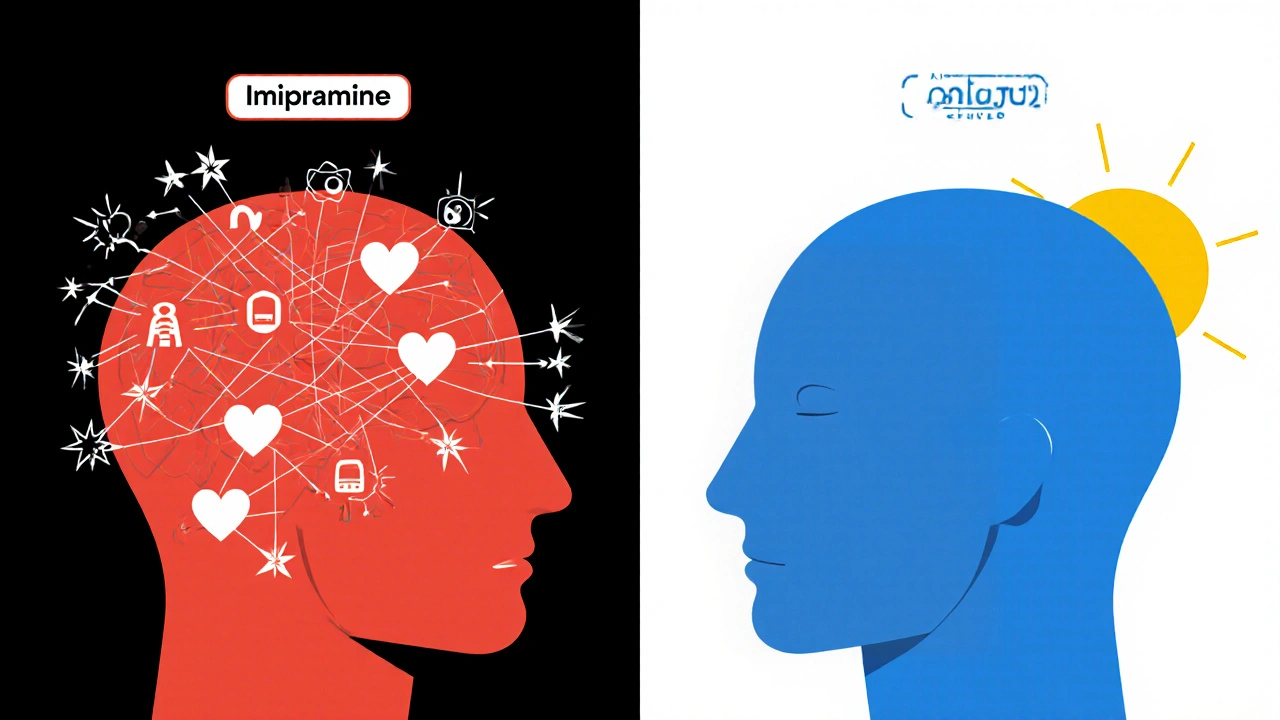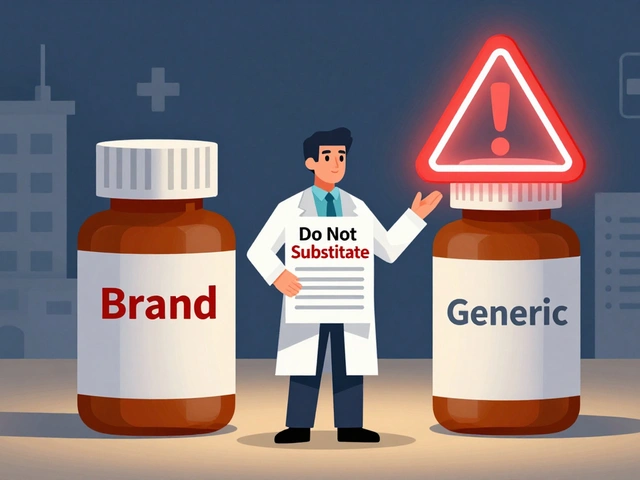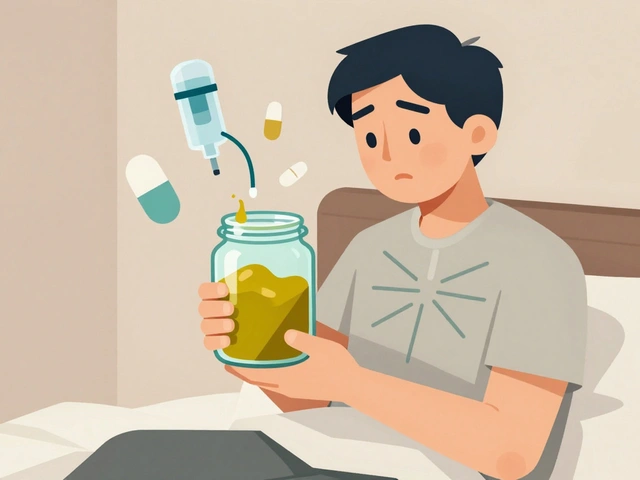Imipramine: What It Is, How It Works, and What You Need to Know
When you hear Imipramine, a first-generation tricyclic antidepressant developed in the 1950s and still used today for depression and anxiety. Also known as Tofranil, it was one of the earliest drugs to show that chemicals in the brain could be targeted to ease emotional pain. Unlike newer SSRIs, Imipramine doesn’t just boost serotonin—it also affects norepinephrine, which can make a difference for people who don’t respond to other antidepressants. It’s not the first choice anymore, but for some, it’s the one that finally works.
Imipramine is often prescribed when depression comes with physical symptoms like fatigue, chronic pain, or sleep problems. It’s also used off-label for bedwetting in children and panic disorder. But it’s not simple—side effects like dry mouth, dizziness, weight gain, and blurred vision are common. Some people stop taking it because they feel foggy or sluggish. That’s why many doctors now start with safer options, but if those fail, Imipramine is still in the toolbox. It’s a drug that requires monitoring, especially for heart rhythm changes, and it’s dangerous if mixed with alcohol or certain other meds.
Related to Imipramine are other tricyclic antidepressants, a class of drugs that include amitriptyline, nortriptyline, and desipramine—all similar in structure and function, but with different side effect profiles. These aren’t all the same. For example, nortriptyline tends to cause less drowsiness, while amitriptyline is stronger for nerve pain. Then there’s depression treatment, a broad field that now includes SSRIs, SNRIs, therapy, and lifestyle changes—but for stubborn cases, older drugs like Imipramine still hold value. And let’s not forget anxiety medication, a category that overlaps heavily with antidepressants, since many drugs used for depression also calm panic and excessive worry. Imipramine fits here too, especially for people whose anxiety is tied to deep, persistent sadness.
You won’t feel better right away. It takes weeks—sometimes up to six—for Imipramine to build up in your system. That’s why people give up too soon. But if you stick with it under a doctor’s watch, it can change your life. Many users report feeling more like themselves after months, even if they struggled with side effects early on. The key is patience and communication with your provider. If the side effects are too much, your doctor can lower the dose or switch you to something like desipramine, which is similar but often better tolerated.
Below, you’ll find real-world guides and comparisons that help you understand how Imipramine stacks up against other options, how to manage its side effects, and what lifestyle changes can make it work better for you. Whether you’re considering it, already taking it, or just trying to understand why someone you know is on it, these posts give you the no-fluff facts you need.
Compare Tofranil (imipramine) with modern antidepressants like SSRIs, SNRIs, and atypical options. Learn which alternatives are safer, faster, and more effective for depression and anxiety, and when to consider switching.
Continue reading...






